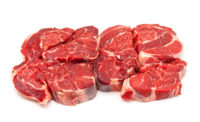Bioelectrical impedance and beef carcass yield

Current marketing practices of commercial cattle feeders often utilize value-based or “grid” marketing. One dimension of that grid includes discounts or premiums for variation of yield away from a par “USDA Yield Grade 3”. The estimation of yield stems from research conducted in the 1950s with a sample population of steers, heifers and cows.
Obviously, the cattle population of today is physically different, resulting from changes in genetics, growth promotants, management strategies, feeding technologies and ultimate end point harvest weights.
Several researchers and industry-based opinions have called for a regeneration of cutability determination to better match our industry’s cattle type. When utilized, USDA graders receive 7-10 seconds to estimate carcass yield. Lawrence et al. (2010) reported that the current methods to determine yield predicted only 31 percent of yield variation in beef-type cattle and 1 percent of the variation in dairy-type carcasses. Because of findings such as this, some commercial facilities have begun to gravitate toward more objective methods of yield quantification.
Bioelectrical impedance (BIA) was first used in humans in the 1970s to determine fat-free mass by way of body water. This technology stems from basic principles of anatomy and physiology. Muscle cells consist of approximately 73 percent water, making them extremely reliable conductors of electricity, while fat cells contain much less water and have a lower affinity of conduction.
When BIA is applied, the apparatus emits an extremely low intensity (450 µA), low frequency (50 MHz) electrical impulse through conductors in the round and chuck portions of a carcass. The technology assesses the drop in electricity through the carcass, giving instantaneous readings.
To examine the ability of BIA to quantify yield in dairy-type steers, 46 animals were harvested from the panhandle of Texas with a carcass weight ranging from 266 to 535 kg. After a 48-hour chilling process, BIA technology was administered. Subsequently, each carcass was fabricated into 27 subprimal cuts common to the U.S. beef industry to determine actual saleable yield (edible red-meat product).
The sample population provided a range of cutability groups from 55 to 71 percent saleable lean and rib-eye areas ranging from 10.4 in2 to 15.8 in2. Through multiple-linear regression analysis, we calculated that BIA has the ability to predict 46.7 percent of the variation in retail yield of these carcasses, a significant improvement over the current determination method.
With more and more producers marketing cattle for yield values, it is obvious that the methods used to determine this yield must be accurate and repeatable!
This simple and inexpensive technology has shown promise in both our research as well as that of others and could assist in carcass valuation as part of the future of cattle marketing technologies.
Looking for a reprint of this article?
From high-res PDFs to custom plaques, order your copy today!







